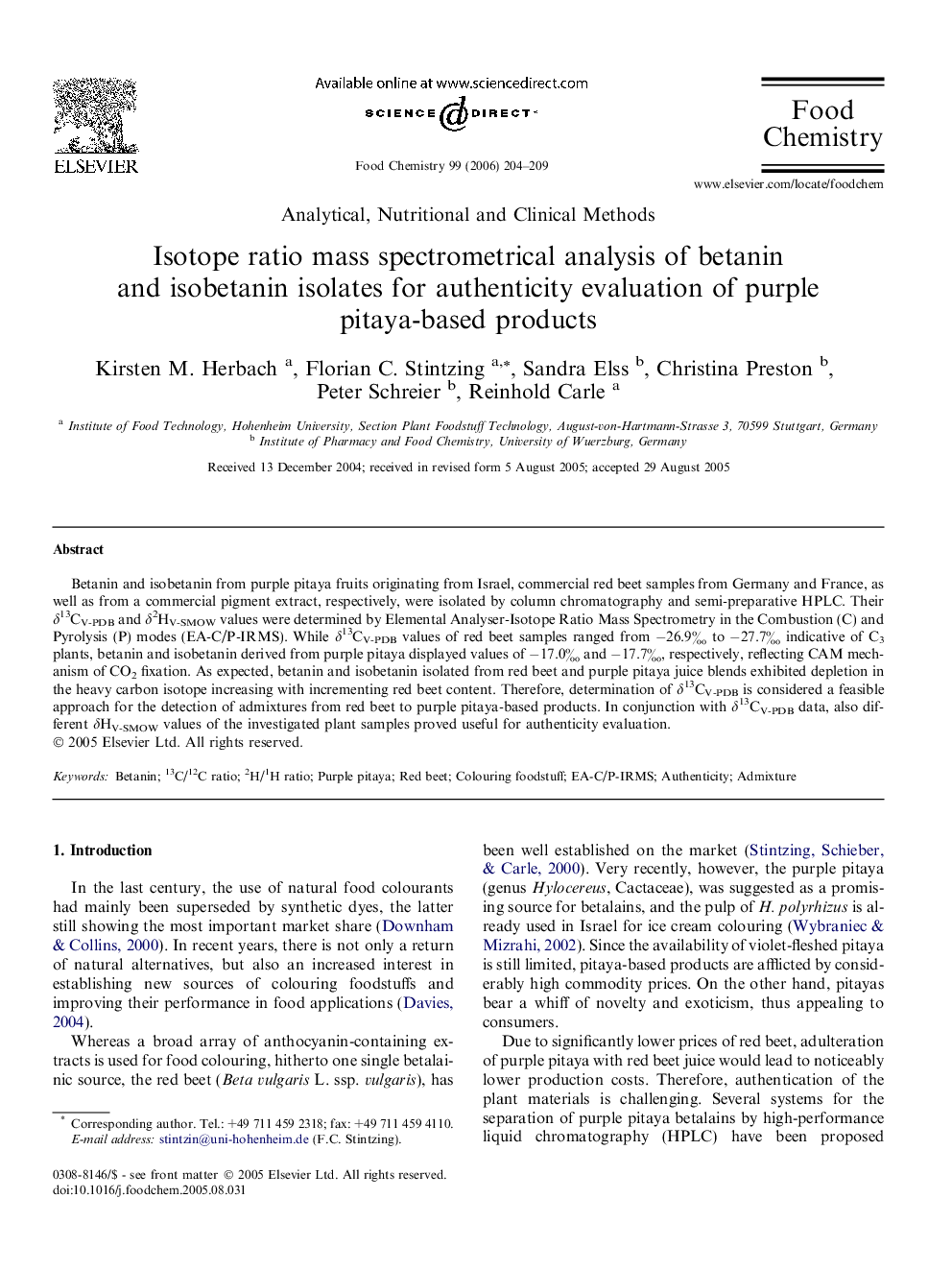| Article ID | Journal | Published Year | Pages | File Type |
|---|---|---|---|---|
| 1191085 | Food Chemistry | 2006 | 6 Pages |
Betanin and isobetanin from purple pitaya fruits originating from Israel, commercial red beet samples from Germany and France, as well as from a commercial pigment extract, respectively, were isolated by column chromatography and semi-preparative HPLC. Their δ13CV-PDB and δ2HV-SMOW values were determined by Elemental Analyser-Isotope Ratio Mass Spectrometry in the Combustion (C) and Pyrolysis (P) modes (EA-C/P-IRMS). While δ13CV-PDB values of red beet samples ranged from −26.9‰ to −27.7‰ indicative of C3 plants, betanin and isobetanin derived from purple pitaya displayed values of −17.0‰ and −17.7‰, respectively, reflecting CAM mechanism of CO2 fixation. As expected, betanin and isobetanin isolated from red beet and purple pitaya juice blends exhibited depletion in the heavy carbon isotope increasing with incrementing red beet content. Therefore, determination of δ13CV-PDB is considered a feasible approach for the detection of admixtures from red beet to purple pitaya-based products. In conjunction with δ13CV-PDB data, also different δHV-SMOW values of the investigated plant samples proved useful for authenticity evaluation.
